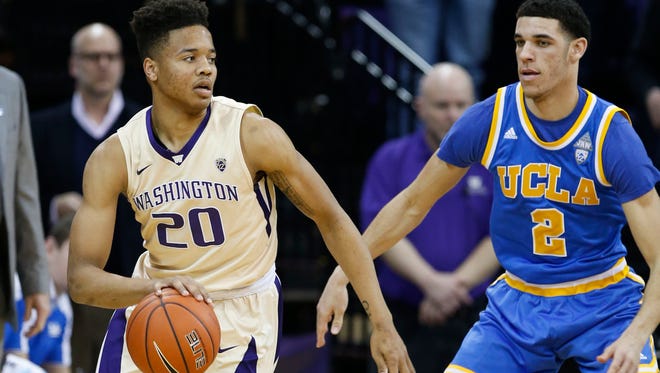Both Boston Celtics, Philadelphia 76ers take risks in deal around No. 1 pick
 Jeff Zillgitt
Jeff Zillgitt
Rarely does an NBA team trade the No. 1 pick in the draft.
But the Boston Celtics are doing it. The Celtics reached a deal that will send the No. 1 pick in Thursday’s draft to the Philadelphia for the No. 3 pick and a future first-rounder.
The Sixers plan to take Washington guard Markelle Fultz, but it is not known yet what the Celtics will do with No. 3 – Kentucky’s De’Aaron Fox, Kansas’ Josh Jackson, Duke’s Jayson Tatum and North Carolina State’s Dennis Smith are viable options.
It’s been two-plus decades since a team with the No. 1 pick traded it before the draft. The Cleveland Cavaliers traded Andrew Wiggins to the Minnesota Timberwolves in 2014, but that was a special circumstance.
The Cavs did not know when they drafted Wiggins that LeBron James would return, presenting Cleveland with a win-now scenario. Wiggins wasn’t traded until late August, nearly two months after the draft – when the Cavs finally reached an agreement to acquire Kevin Love.
Latest NBA coverage:
NBA draft: Top 10 prospects at each position
Report: Paul George informs Pacers he intends to leave in free agency, prefers Lakers
NBA mock draft 3.0: Is Lonzo Ball a lock to the Lakers?
You have to go to 1993 to find a similar situation to this Celtics-Sixers deal. That’s when the Orlando Magic traded the No. 1 pick to the Golden State Warriors for the No. 3 pick and three future first-rounders. The Warriors took Chris Webber, and the Magic selected Penny Hardaway.
Orlando reached the Finals in 1995 and Eastern Conference finals in 1996 but never won a title.
What this deal means for the Celtics
Boston president of basketball operations Danny Ainge took a risk. If Fultz turns out to be a generational player a la Golden State’s Steph Curry, this deal will not look good for Ainge. But Ainge doesn’t believe that will happen, or he wouldn’t have made the trade.
Ainge must think he can get a similar talent at No. 3 and was willing to take that gamble. Plus, Ainge stockpiled another first-round pick, giving Boston the No. 3 pick this year; two first-rounders in 2018 (own pick, Brooklyn’s picks) and a possible third first-rounder from the Los Angeles Lakers; at least one and possibly three more protected first-rounders in 2019 (Memphis, Sacramento or Philadelphia, L.A. Clippers).
The trade also frees up more salary cap space for the Celtics to use on a maximum salary player in free agency, which starts in July. The difference in salary between the first pick and third pick is $1.4 million, and every dollar matters if the Celtics are trying to land a player such as Utah’s Gordon Hayward or Los Angeles Clippers’ Blake Griffin.
What this deal means for the Sixers
If the Sixers believe Fultz will be that franchise-altering player – and they turn out to be right – the trade is a no-brainer. The Sixers gave up just one draft pick to move up two spots for the guy they believe will be that player.
The Sixers will have a young core centered on 2016-17 rookie of the year candidates Joel Embiid and Dario Saric, 2016 No. 1 pick Ben Simmons, who didn’t play last season because of an injury, and Fultz. There’s a lot of potential in that group, but it will take time for them to develop into an Eastern Conference contender.
While Fultz and Simmons are point guards, the Sixers believe they can co-exist – specifically playing Fultz off the ball at shooting guard, allowing Simmons to take advantage of court vision and passing skills and allowing Fultz to showcase his scoring while not running the offense.
Also, don’t be surprised if this isn’t the end of the Sixers’ significant offseason deals.
Follow USA TODAY Sports' Jeff Zillgitt on Twitter @JeffZillgitt.
